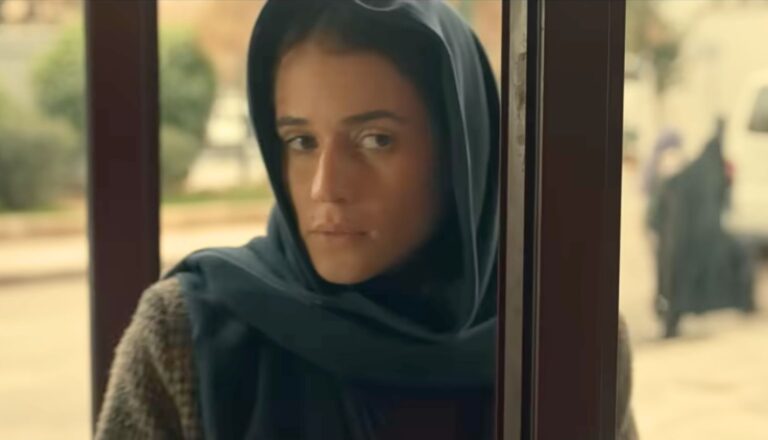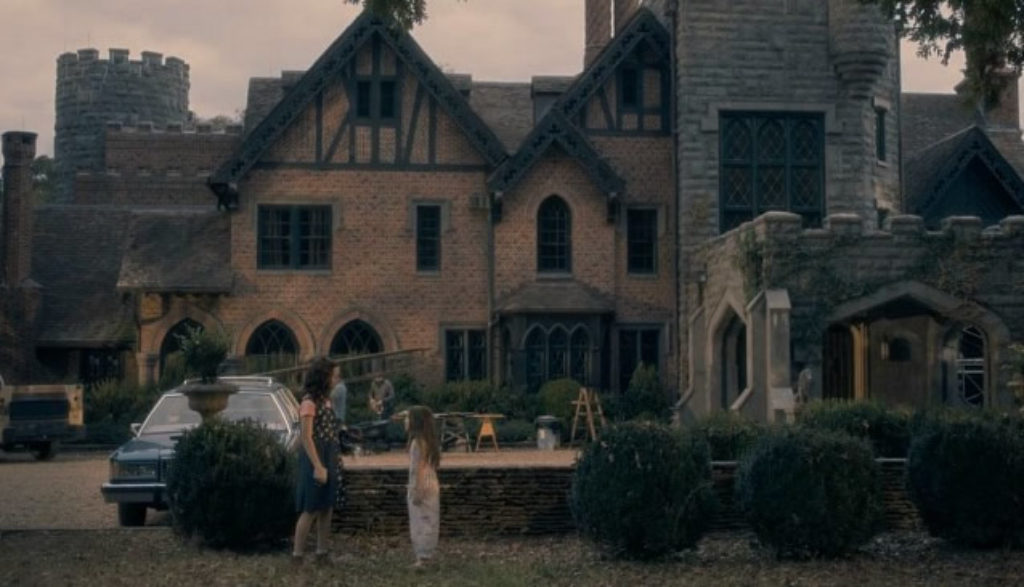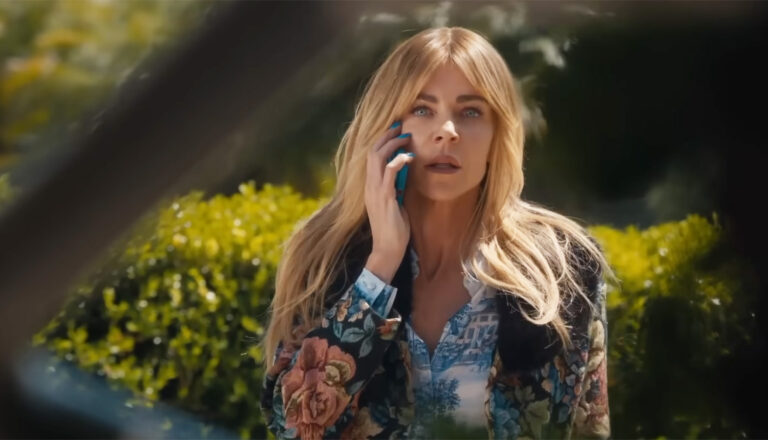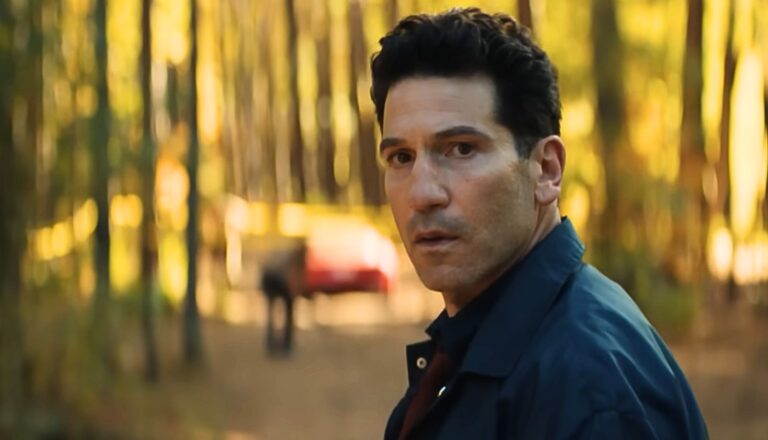
Tehran
This spy thriller on Apple TV+ comes with a few twists. But the content issues in it are fairly predictable.

Whatever walked there, walked alone.
So horror author Shirley Jackson wrote in her 1959 book, The Haunting of Hill House. We hear those same five words again, solemnly intoned in the opening moments of this new Netflix series, loosely inspired by Jackson’s novel.
But is that true? If we judge from the rattling doorknobs and shaking paintings and the creepy, crawling things we see, it would seem that the halls of Hill House are quite crowded, actually. And the house is ushering in more haunts all the time.
Jackson’s original book (and the 1963 movie that followed) centers on a psychically fragile woman named Eleanor Vance. She and a small team of paranormal investigators spend time in Hill House, a sprawling, crumbling mansion with a macabre reputation. Many consider Jackson’s work to be the definitive literary ghost story of the 20th century.
In a twist perhaps somewhat fitting, Netflix has kept the house and some key characters but promptly killed off most of the rest of the story, making room for a new host of guests. Also fitting: Time is relative here. The story’s told on separate timelines, à la This Is Us: Future fatalities walk Hill House’s halls in unknowing innocence, unaware that they could be the home’s next haunts.
In this version of Hill House, and in its own Netflixian past, Eleanor is the youngest daughter of house-flippers Hugh and Olivia Crain. She’s not alone: Hugh and Olivia preside over a large, mostly happy brood—Steve, Shirley, Theo and Luke are the other kids in tow.
As Hugh and Olivia push to finish this one final property so they can make enough money to build their own “forever” home, the kids rattle around in the mansion’s endless rooms and frolic in the overgrown acreage with, at first, nary a care. Thumping walls and shaking paints are simply “old pipes,” Hugh explains. And the other … things that the kids see? The product of overactive imaginations, they’re told. Sure, the hidden basements and locked attics of Hill House are a bit bothersome, but what old house doesn’t have its share of secrets?
Things are significantly less rosy for the Crain clan in the present. Steve’s become a writer of “real” ghost stories, even though he doesn’t believe in ghosts (despite his own experience with them; he believes that overactive imagination line). His first subject was Hill House, naturally—a novel that some other siblings consider nothing short of an act of betrayal. Shirley’s a mortician, tasked with giving the dead one last time with the living. Theo’s a lesbian psychologist with a literal psychic touch. Luke’s an addict constantly running from rehab.
And Eleanor? Dead. She went back to Hill House and killed herself—not unlike what her mother, Olivia, allegedly did years before, when they all lived there together, and Olivia held out the glowing promise of a “forever” house like a carrot.
Hill House broke them, some believe. It broke them both. Perhaps it broke them all.
In the context of modern horror, The Haunting of Hill House is more restrained than some similar tales. It’s no slasher story, like a 10-episode Friday the 13th movie. It’s not horrifically gory, like a Netflix version of Saw. The real frights here don’t jump out of closets with a boo and a burst artery: Instead, they creep from behind boxes, thump down the halls, settle into bed with the sleeping children—holding them, tender and tight, in their cold, clammy arms. It’s yet more proof that stories don’t need explicit R-rated content to scare the living daylights out of you.
But to say that sort of content isn’t needed doesn’t mean it isn’t there. We don’t need to see a female corpse with exposed breasts and innards. But we get it, anyway, even though it doesn’t heighten the scares one little bit. We don’t need to see a play-by-play of Theo’s sexual escapades, yet there it is—sneaking into our living rooms like an unbidden bogeyman.
The only f-word horror fans ask of a horror story? Fright. But Netflix plasters us with plenty of the other sort, too.
Netflix has fielded plenty of plaudits for its atmospheric, psychological ghost story. Viewers have peppered Twitter with backhanded praise. “Haunting of hill house [sic] is making me terror vomit in joyful confusion,” one tweet read. “So I love it.”
But not everyone enjoys the experience of “terror vomit.” Some would rather not have graphic, salacious images stalking through their brains’ shadowed corridors, or hear unwanted words thump against its doors. The Haunting of Hill House isn’t just scary: It’s dark—the storytelling equivalent of sneaking into a black basement without turning on the lights.
(Editor’s Note: Plugged In is rarely able to watch every episode of a given series for review. As such, there’s always a chance that you might see a problem that we didn’t. If you notice content that you feel should be included in our review, send us an email at letters@pluggedin.com, or contact us via Facebook or Instagram, and be sure to let us know the episode number, title and season so that we can check it out.)
The series’ third episode focuses on Theo, the Crain’s middle daughter. In the past, she and brother Luke discover a hidden basement, and Theo begins to realize that she can sense certain things simply by touching them. In the present, Theo—now a child psychologist—discovers why one of her clients sees her own bogeyman at night, even as she grapples with her own tendency to emotionally close people out.
That said, Theo doesn’t have any problem with relatively emotionless physical intimacy. She invites a past female lover to her house and tries to have sex with her before the two can even complete a sentence. (Theo later talks about her difficult day, but then invites her lover to bed, and the two kiss and make out before the camera leaves.) In a not-so-distant past, Nell (who just got married) and Steve catch Theo having sex with Nell’s maid-of-honor. (We hear sexual noises behind a bedroom door, and both come out looking mussed.) “We didn’t know you were into …” Nell stammers. “Bridesmaids?” Theo finishes, before the two hug.
In the present, we learn that Theo’s client, a 9-year-old girl, was being molested by her stepfather. (We see Theo lie on a couch in the family basement and psychically relive the girl’s experience.) The girl’s own made-up demon haunts Theo’s apartment as well.
In the past, Theo touches her mother, Olivia, and has a premonition of Olivia’s death—half of her face bloodied and disfigured, as if she has been shot in the head. Luke, in Hill House’s secret basement (a hot spot for bootlegging in days gone by) sees a corpse crawl toward him. When he’s whisked out of the basement, Olivia finds that his shirt has been torn. (Hugh, the father, thinks it must’ve caught on something.) We see Theo drink frequently, perhaps at least once to excess. Other people drink, too. Theo, as a child, uncovers a fancy bottle of wine.
We see statues in states of disrobing. A bride and groom kiss. We hear references to Nell’s suicide and see her corpse in a mortuary. (Theo looks at the body and says, “Jesus wept.”) The f-word is uttered about four times (all by Theo), and we hear “d–n”, “h—” and “p-ss” too. Jesus’ name is abused three times.

Paul Asay has been part of the Plugged In staff since 2007, watching and reviewing roughly 15 quintillion movies and television shows. He’s written for a number of other publications, too, including Time, The Washington Post and Christianity Today. The author of several books, Paul loves to find spirituality in unexpected places, including popular entertainment, and he loves all things superhero. His vices include James Bond films, Mountain Dew and terrible B-grade movies. He’s married, has two children and a neurotic dog, runs marathons on occasion and hopes to someday own his own tuxedo. Feel free to follow him on Twitter @AsayPaul.

This spy thriller on Apple TV+ comes with a few twists. But the content issues in it are fairly predictable.

ABC’s newest police drama takes an earnest, somewhat positive look at a profession that’s tougher than ever these days.

ABC’s ‘High Potential’ has an interesting whodunnit premise, but it carries some potential problems, too.

When a whodunnit is wrapped up in sex, blood, foul language and extramarital affairs, you have to wonder if it’s even worth investigating.